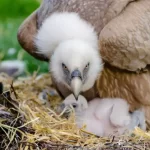National Emergency In Costa Rica: Burrowing, Flesh-Eating Fly Larvae Outbreak
The post National Emergency In Costa Rica: Burrowing, Flesh-Eating Fly Larvae Outbreak appeared first on Healthy Holistic Living.
In Costa Rica, a nation celebrated for its rich biodiversity and commitment to conservation, an alarming outbreak has recently shifted attention from its picturesque landscapes to a burgeoning national crisis. The New World screwworm, a flesh-eating fly larvae that targets the open wounds of mammals, has sparked a state of emergency, underscoring a severe ecological and public health challenge. This pest, scientifically known as Cochliomyia hominivorax, has historically wreaked havoc across the Americas by preying on livestock, wildlife, pets, and even humans, necessitating urgent and effective control measures.
Nearly seven months following the initial alerts, the situation has escalated with the pest’s population on the rise, marking a significant threat not only to the agricultural sector but also to the public’s health. This development comes despite decades of eradication efforts, including those pioneered by the U.S. Department of Agriculture (USDA), which had previously seen success in North America. As Costa Rica confronts this renewed invasion, the focus intensifies on strategies to contain and eliminate this invasive species, echoing the critical importance of biosecurity and ecological management in the region.
The Resurgence of the New World Screwworm in Costa Rica
The New World screwworm (NWS) fly, a native parasite to the Americas, has re-emerged with troubling vigor in Costa Rica, posing a significant threat to both domestic and wild animal populations. This resurgence is particularly concerning given the screwworm’s preference for laying eggs in the open wounds of mammals, leading to severe infections that can be fatal if untreated. The fly’s lifecycle allows for rapid population growth, with larvae that burrow into living tissue, causing extensive damage. The initial detection of the NWS in Costa Rica was met with immediate concern, triggering memories of past outbreaks that had devastating effects on livestock and wildlife, highlighting the critical need for swift action to prevent widespread damage.
As the situation progressed, the Costa Rican government, alongside international health organizations, has been monitoring the spread closely. By March, the escalating situation prompted the declaration of a national emergency, the first such response to a screwworm outbreak in decades. This decision was driven by both the speed of the outbreak’s expansion and its potential to disrupt not only the agricultural sector but also the ecological balance, threatening species crucial to the country’s biodiversity.
The challenge is compounded by the screwworm’s ability to spread quickly through animal populations, facilitated by the odor emitted from infested wounds, which attracts more flies. This aspect of the screwworm’s biology makes controlling the outbreak particularly urgent, as each uncontrolled case can lead to exponentially more cases, putting an increasing strain on both natural and human resources. The national emergency highlights the severe impact of the screwworm on Costa Rica’s commitment to ecological and animal health, underlining the urgent need for effective containment and eradication strategies.
Lifecycle and the Perilous Impact of the New World Screwworm
The New World screwworm (NWS) stands out among parasitic blowflies for its particularly aggressive lifecycle and its preference for live animal hosts. This fly has a chilling method of reproduction, laying its eggs specifically in the open wounds of mammals. The larvae, upon hatching, possess an alarming ability to burrow deep into living flesh, consuming tissue as they grow. This activity not only causes severe pain and potential death to the affected animals but also poses significant risks to human health, particularly in rural or agricultural communities where close contact with animals is common.
The lifecycle of the NWS is highly temperature-dependent, with warmer conditions accelerating its progression. In climates where the average temperature reaches around 29°C (84.2°F), the lifecycle from egg to adult fly can complete in as little as 18 days. This rapid reproduction rate enables swift increases in population under favorable conditions, complicating efforts to control outbreaks. In cooler climates, however, the development cycle extends, potentially taking up to three months. This variability plays a critical role in shaping the strategies used for managing and eradicating screwworm populations in different geographical areas.
The danger of screwworm infestations extends beyond the initial physical damage to animals. Infected wounds can attract other species of flies, leading to secondary infections and complicating the recovery process. The smell of an infected wound can also attract more NWS females, creating a vicious cycle of reinfestation that can devastate herds of livestock and wildlife populations. For newborn animals, such as calves and lambs, screwworm infestations can be particularly lethal, often targeting the naval area and leading to high mortality rates if not promptly treated. This aspect of the screwworm’s impact highlights the critical need for immediate and effective intervention strategies to protect animal welfare and prevent broader ecological disruptions.
Eradication Efforts and Future Strategies
The fight against the New World screwworm has historically seen innovative approaches, particularly the sterile insect technique (SIT), which has been pivotal in controlling outbreaks. Developed by the USDA, this method involves breeding large numbers of NWS flies, sterilizing the males through radiation, and then releasing them into affected areas. The technique relies on the fact that female NWS flies mate only once in their lifetime; hence, mating with a sterile male effectively ends the reproductive cycle for that female, reducing future generations of the pest.
This approach was first implemented in the late 1950s in the United States, primarily in response to screwworm outbreaks that severely impacted the livestock industry. The method proved highly effective and was a key factor in eradicating the pest from the U.S. by the 1960s. Due to its success, similar strategies have been employed in other parts of the Americas, targeting ongoing outbreaks and preventing the spread of this invasive species. The eradication campaign has not only saved billions of dollars in livestock losses but has also contributed significantly to the welfare of the affected animal populations and their ecosystems.
Looking ahead, Costa Rica’s recent declaration of a national emergency highlights the need for continued vigilance and the application of proven eradication methods like SIT. The government, in collaboration with international bodies such as the USDA and local health agencies, is intensifying efforts to curb the spread of the NWS. This includes increasing surveillance, improving rapid response strategies, and engaging with communities to raise awareness about prevention and early detection. The goal is to not only control the current outbreak but also to establish a long-term strategy to prevent future infestations, ensuring the safety and health of both animals and humans in affected regions.
Long-Term Implications and Collaborative Efforts
The ongoing battle against the New World screwworm in Costa Rica not only affects the immediate health of animal populations but also has broader implications for the country’s economy and public health systems.
The potential for screwworms to rapidly infest large groups of livestock and wildlife can lead to significant economic losses in agriculture and ecotourism, sectors vital to Costa Rica’s economy. Moreover, the threat extends to human health, particularly in rural communities where close interaction between humans and animals is common. To address these challenges, a collaborative effort among various stakeholders is crucial. This includes:
Government and policy makers: Implementation of stringent policies and support for research into more effective control measures and treatments.
Agricultural and wildlife management communities: Adoption of best practices in animal husbandry and wildlife care to minimize the risk of screwworm infestations.
Healthcare providers: Increasing awareness and training among healthcare professionals to recognize and treat screwworm infections promptly.
Furthermore, international cooperation plays a pivotal role in screwworm management, as the pest knows no borders. Sharing successful eradication techniques and continuous monitoring can help prevent the spread of screwworms to new areas. This cooperation should be aimed at not only controlling the current outbreak but also at establishing robust preventive measures to guard against future re-emergences.
Ultimately, the fight against the New World screwworm is a test of resilience and innovation. By leveraging both traditional methods and technological advancements in pest control, and fostering a culture of vigilance and cooperation, Costa Rica can hope to regain control over this pest and prevent future outbreaks, safeguarding both its agricultural heritage and natural biodiversity.
Comprehensive Prevention and Control Tips
Managing and preventing outbreaks of the New World screwworm requires a multifaceted approach that involves community awareness, vigilant monitoring, and the strategic use of eradication techniques. Here are some detailed tips to help stakeholders effectively combat this invasive species:
Conduct frequent checks: Regularly inspect all animals for wounds or signs of infection, particularly in environments where screwworms are known to be active. Early detection is crucial for effective treatment and containment.
Immediate veterinary care: Any wounds found should be treated immediately by a veterinarian to prevent egg deposition by screwworm flies. Use appropriate wound dressings and medications as recommended by health professionals.
Protective clothing for animals: Consider the use of protective gear such as wound covers or fly-repellent clothing for animals in high-risk areas.
Quarantine new or infected animals: Isolate any new or infected animals to prevent the spread of infestation to healthy populations.
Sanitation: Maintain high standards of cleanliness in animal housing to reduce the attractiveness of these areas to screwworm flies.
Awareness programs: Conduct community outreach programs to educate farmers, pet owners, and the general public about the risks of screwworms and the importance of prompt treatment of wounds.
Monitoring and surveillance: Utilize traps and regular surveys to monitor screwworm populations and evaluate the effectiveness of ongoing control efforts.
These strategies, when implemented collectively, can significantly reduce the impact of New World screwworm outbreaks and safeguard the health of livestock, wildlife, and potentially human populations. Engaging the community and maintaining rigorous control measures are essential for the successful eradication and long-term management of this devastating pest.
Final Thoughts on Costa Rica’s Ecological Crisis
The resurgence of the New World screwworm in Costa Rica presents a formidable challenge that demands immediate and concerted action. As this nation, renowned for its commitment to environmental stewardship and biodiversity, faces this pressing crisis, the need for an integrated approach becomes paramount. The battle against such a resilient pest underscores the broader implications for global ecological health and the interconnections between human, animal, and environmental well-being.
Costa Rica’s response, combining rigorous surveillance, community engagement, and innovative eradication strategies such as the sterile insect technique, highlights the critical role of adaptability and international cooperation in addressing biosecurity threats. The lessons learned here extend beyond national borders, offering valuable insights into the dynamics of pest control, the importance of early detection, and the effectiveness of proactive measures.
As the world watches and supports Costa Rica’s efforts, this episode serves as a reminder of our shared vulnerability to ecological disruptions and the importance of maintaining vigilance in conservation practices. By fostering a culture of informed awareness and collaboration, we can hope to not only overcome such challenges but also prevent their recurrence, ensuring the protection of our invaluable natural resources for future generations. This proactive stance is essential not just for Costa Rica but for the global community, emphasizing our collective responsibility in safeguarding our planet’s biodiversity.
The post National Emergency In Costa Rica: Burrowing, Flesh-Eating Fly Larvae Outbreak appeared first on Healthy Holistic Living.
Related posts:
 Person Becomes Second Ever To Catch H5N1 Bird Flu In US – And They Got It From Cows
Person Becomes Second Ever To Catch H5N1 Bird Flu In US – And They Got It From Cows
 Airline is offering an ‘all you can fly’ plane pass costing less than $650 for the year
Airline is offering an ‘all you can fly’ plane pass costing less than $650 for the year
 The Next Pandemic May Come Sooner Than You Expect.
The Next Pandemic May Come Sooner Than You Expect.
 Fake spider web decorations have a deadly impact on wildlife! Hopefully, once people realize this, they’ll never buy them again.
Fake spider web decorations have a deadly impact on wildlife! Hopefully, once people realize this, they’ll never buy them again.
 Plants Emit Sounds Too High For Human Ears When Stressed Out
Plants Emit Sounds Too High For Human Ears When Stressed Out
Powered by YARPP.
Related Posts

“Well deserved”: Florida man mocking wheel-chair bound woman with Down Syndrome gets beaten up by brother at Disney World






